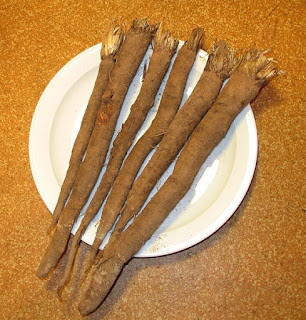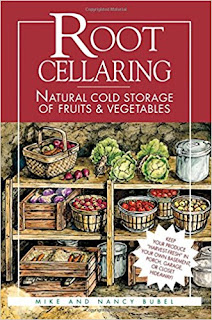Imagine you are living on a backcountry homestead in 1850.What would the most important food and crop staple for you and your family? The answer might surprise you. It is not wheat. It is not corn. It is not beans or peas, or even tomatoes.
The most important staple on homesteads during the 1800s are root crops: turnips, rutabagas, beets, parsnips, carrots, potatoes, onions, etc.
The reasons root crops are so important on the 1800s homestead:
- Very filling (high carb, high fiber, prevents hunger)
- Reliable crops/easy-to-grow (crop failures can mean starvation and even death to homesteaders in the 1800s)
- Highly productive (high yield) crops
- Excellent for available food storage methods (1800s food storage is root cellars, drying, and pickling)
- Can be prepared many different ways (baked, boiled, mashed, stews, soups, sliced & fried, etc.)
 |
| Black Salsify roots * More common in 1800s than today * Oyster-like taste |
Squashes, particularly winter squashes with their thicker skins, are probably the second most important staple on the 1800s homestead. The thick skins of winter squashes mean that they store very well in root cellars. Summer squashes, with their thinner skins, do not store well in root cellars, but can be pickled for long-term storage.
Beans and peas are another popular 1800s homestead staple because they are a relatively reliable crop, highly productive, and easily dried for long-term storage. Seed-saving, important on the backcountry homestead, is also very easy with beans and peas (as well as squashes) which is another factor in their favor.
Peppers are also a popular choice on the 1800s homestead. They can be dried for long-term storage, but more often are pickled. Larger-type peppers are often stuffed with cabbage, onions, and spices (similar to what we call relish today) and then pickled.
Of course, a typical 1800s homestead also grows a wide variety of other crops, such as cabbages, tomatoes, and corn. However, the most important crop, the main staple, are root vegetables.
————–
Of Interest:
 |
Root Cellaring: Natural Cold Storage of Fruits & Vegetables |
http://www.timgamble.com/2017/12/1800s-backcountry-homesteads-most.html
On – 26 Dec, 2017 By Tim Gamble



